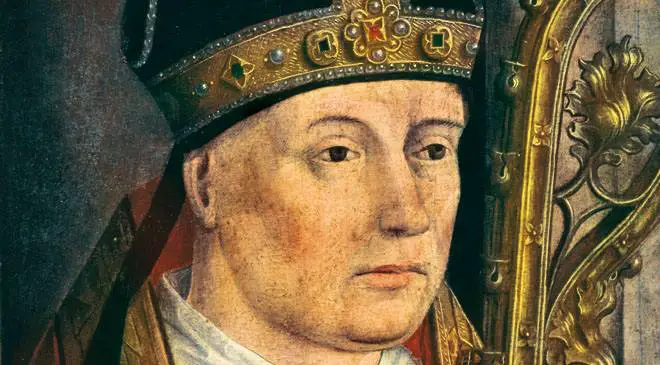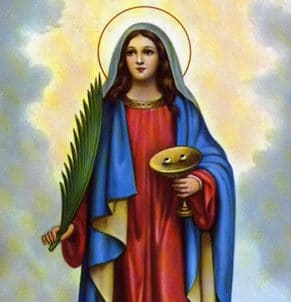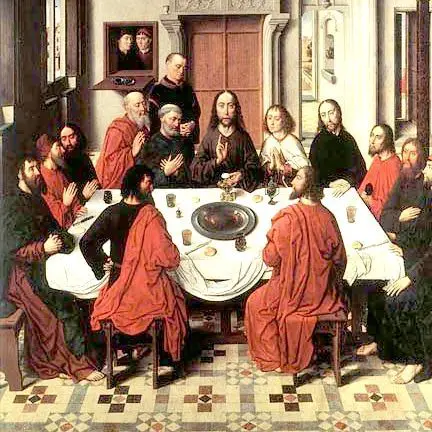The Yin Yang is an energy, a symbol that belongs to Taoism, here we will tell you about its origin, philosophy, its use in love, food and much more (see article: Founder of Taoism).
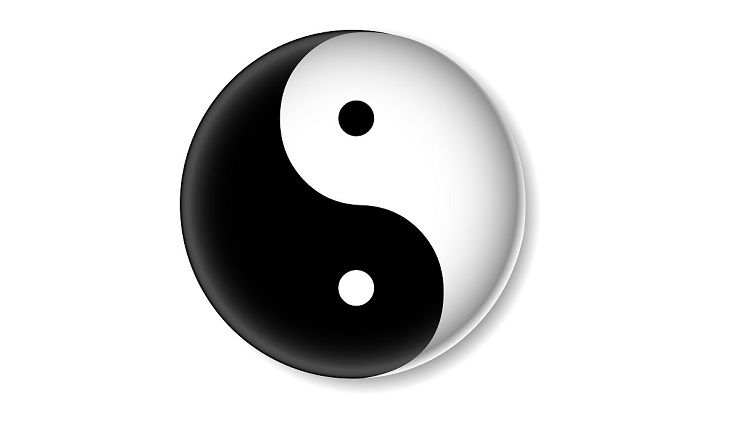
Yin and Yang Which is which?
According to Taoism, Yin and Yang are two concepts that show the duality in everything on earth. Yang is a luminous, positive energy that is intensely manifest, as opposed to Yin, which is a passive, negative light. Every thing or circumstance is related to these dualities, and Feng Shui uses them to achieve balance in order to achieve wellbeing and prosperity (see article: Custom of Judaism).
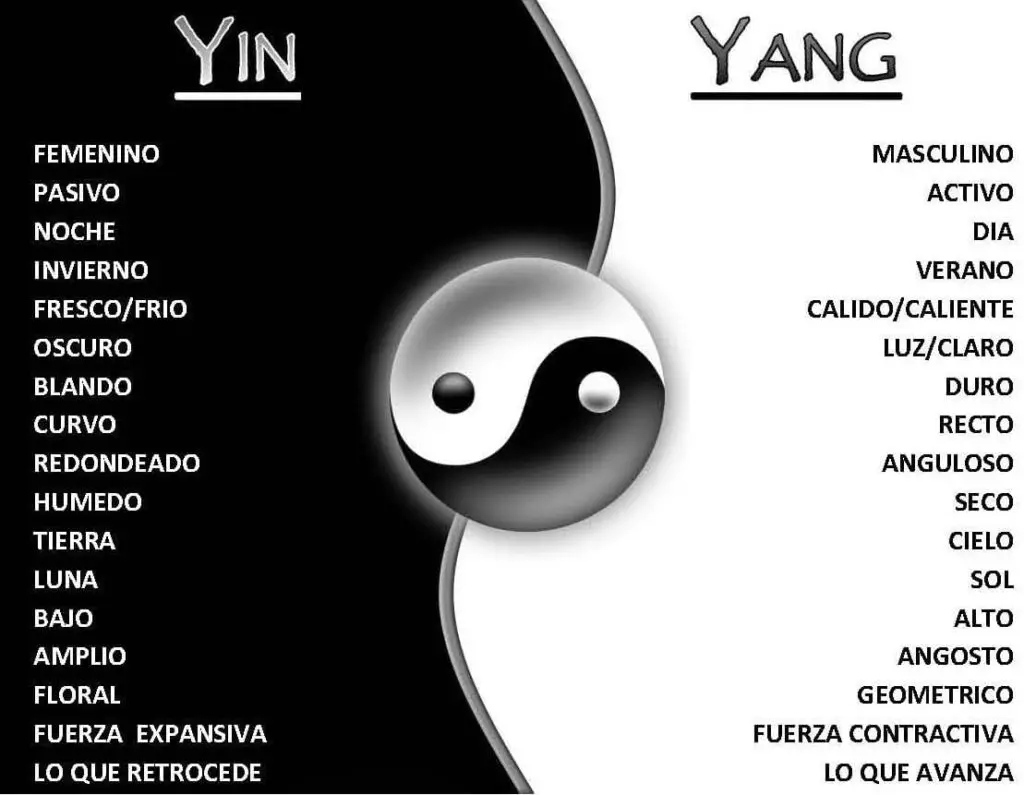
The Yin and Yang is a symbol known as the Tai Chi diagram, which refers to balance and is represented by a circle within which there are two parts in the shape of an is or a fish, one white with a black dot and the other black with a white dot.
To explain it in a simpler way, we could say that this symbol wants to express that in everything good there is some evil, and in everything bad there is some good. In this sense, Yin and Yang reinforces the idea of balance between opposites, the “why” and the “what for”, to give an example, for light to exist there must be darkness.
The meaning of Yin Yang
Yin Yang is one of the foundations of Chinese philosophy, where Yin and Yang represent two opposing energies that need and complement each other, the existence of one depends on the existence of the other. Yin and Yang is a symbol of harmony due to the balance created by the interaction of the two energies (see article: Clothing in Judaism).

Various writers have associated Yin and Yang with male and female, light and sun, but these are misconceptions, as Taoism is basically made up of positive and negative energy, the two images within the circle symbolise the concept that each of the forces reaches its extreme point and has an opposing feeling within itself.
When there is a balance, it indicates that there is well-being, but when it is broken, we can see problems in people’s lives, as there should be neither an excess nor a deficiency of Yin or Yang, as it affects the energy in a negative way, while the practice of Feng Shui allows us to perceive, seek balance in homes and in the life of the person. Moreover, tattoos, the symbol of Yin and Yang, are very popular because they represent balance.
Phrases
The Yin Yang phrases are paragraphs written with the aim of transmitting a message to anyone who needs to be spiritually nourished with a message full of positivism (see article: The Cult of Judaism).
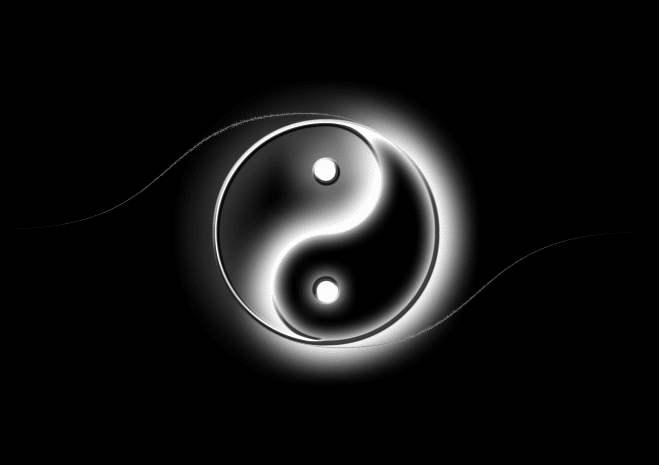
They are written by unknown authors and often by writers with a recognised track record. They are based on Taoist philosophy, the main message of which is that in the different situations, moments, circumstances and contradictions that life itself presents us, we must seek balance, we must always find a middle ground, because by doing so we can enjoy well-being, peace and harmony in all areas of our lives.
In order to understand this better, let us take as an example some phrases from Yin-Yang: “There can be no light without darkness, no hate without love, and no good without evil”, perhaps in this phrase we can see the clearest example of the balance that can exist in something so opposed.
Another phrase in which we can appreciate what we are saying is “The universe is governed by yin and yang, light and dark, matter and antimatter, cold and heat. So do not be afraid to cry, for without sadness there is no true happiness.
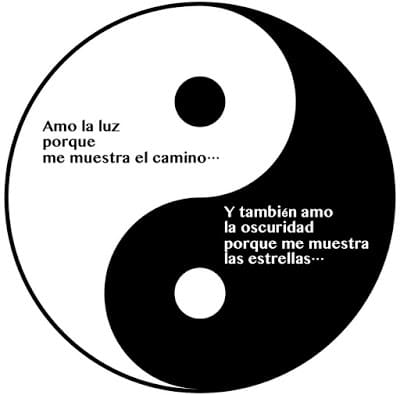
To be happy, you must know how to overcome sadness. To love with maturity, we must also love the light and shadow of the other person.
To collaborate in our development as human beings, we must find that point where the rational and the emotional meet and understand each other, a space of self-knowledge, acceptance and growth.
The History
The history of Yin Yang and its meaning was written by one of the pioneer philosophers of the Tao, Lao Tzu, an official of the Royal Treasury or Library of the Zhou Dynasty, which gave him the opportunity to become a renowned sage (see article: Conservative Judaism).
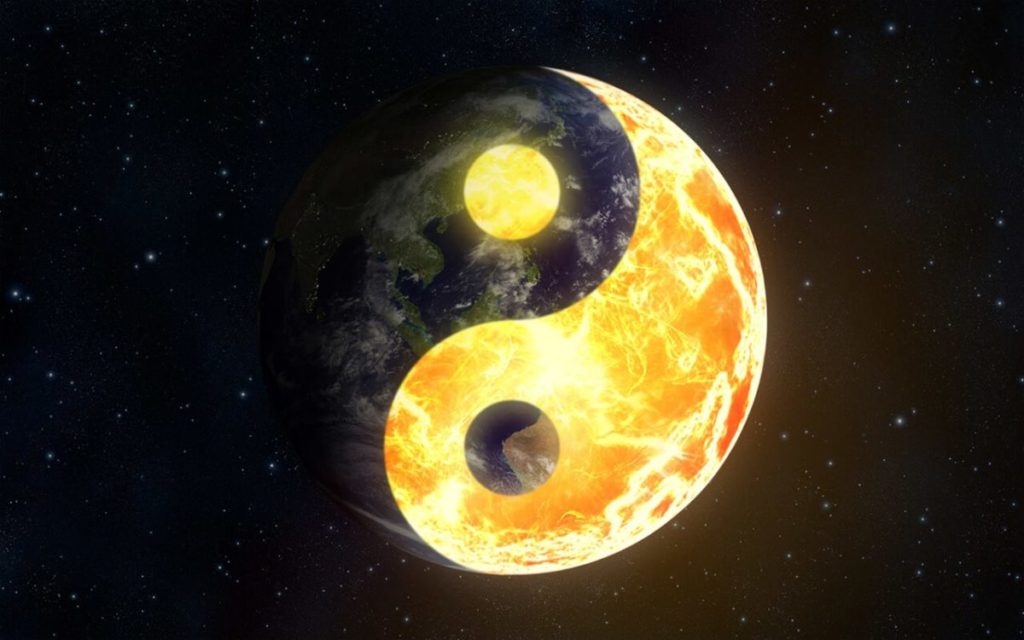
It was Lao Tzu himself who exemplified this philosophy of Yin and Yang by writing: “Everything has both yin and yang, and from their alternate rise and fall new life is born”. The young Confucius is said to have visited him to ask for information about the rituals of the Zhou dynasty. Angered by the decadence of the Zhou royal family, Lao Tzu left the capital Luoyang and wrote the two volumes of the Tao-te ching when he reached the Han Guguan Pass.
The concepts of yin-yang and the five elements provided an intellectual framework for much of Chinese scientific thought, particularly in the fields of biology and medicine. The organs of the body were seen as interrelated in the same way as other natural phenomena, best understood by searching for correlations and correspondences. Disease was seen as a disturbance in the balance of yin and yang, or the five elements, caused by different emotions such as heat or cold, or many other causes.
Therefore, therapy was based on a reliable diagnosis of the severity of the imbalance, such as a change in lifestyle. The philosophy of yin and yang guided the ancient Chinese to change their inner selves. The Yellow Emperor said: “The principle of yin and yang is the foundation of the whole universe. It is in all creation. It involves the development of family relationships, it is the root and source of life and death, it is found in the temples of the gods to treat and cure disease, its origins must be sought”. (See article: Zen Taoism).
Yin and Yang are antagonistic in nature, but they are part of nature, they are interdependent and cannot exist without each other. The balance between Yin and Yang is fundamental. When Yin is stronger, Yang is weaker and vice versa. Yin and Yang are interchangeable under certain conditions, so there is never only Yin and never only Yang. In short, Yin can have some parts of Yang and Yang can have some factors of Yin. Yin and Yang are believed to be present in all things on this planet.
Origin
The origin of the meaning of Yin and Yang is not well known. The traditional Chinese essence of yin is that which symbolises the northern, cloudy part of a mountain, while the simplified essence has the character of the moon. As for Yang, it is the one that symbolises the southern, sunny side of a mountain, in the simplified one it appears as the sun (see article: Philosophy of Taoism).
According to the philosopher Wing-Tsit Chan, these two concepts are associated with the natural manifestations of the clouds covering the sun and its brightness. As for Mircea Eliade, he quotes Marcel Granet to point out that the term yin is associated with cold, internal and covered, while yang is associated with heat and sunshine.
In addition, we can say that these are two concepts whose origins (probably) correspond to agrarian religions. This is a representation of opposing forces that are at the same time complementary and that can even be observed in testimonies from the Bronze Age in ancient China. Finally, Yin and Yang represent the basic dualism of the Chinese world view and later influenced Chinese mythology.
Mandala
Mandala is a word of Sanskrit origin, meaning the circle or wheel, the perfect form and therefore the symbol of the cosmos and eternity. It symbolises the creation of the world, God, life and humanity.
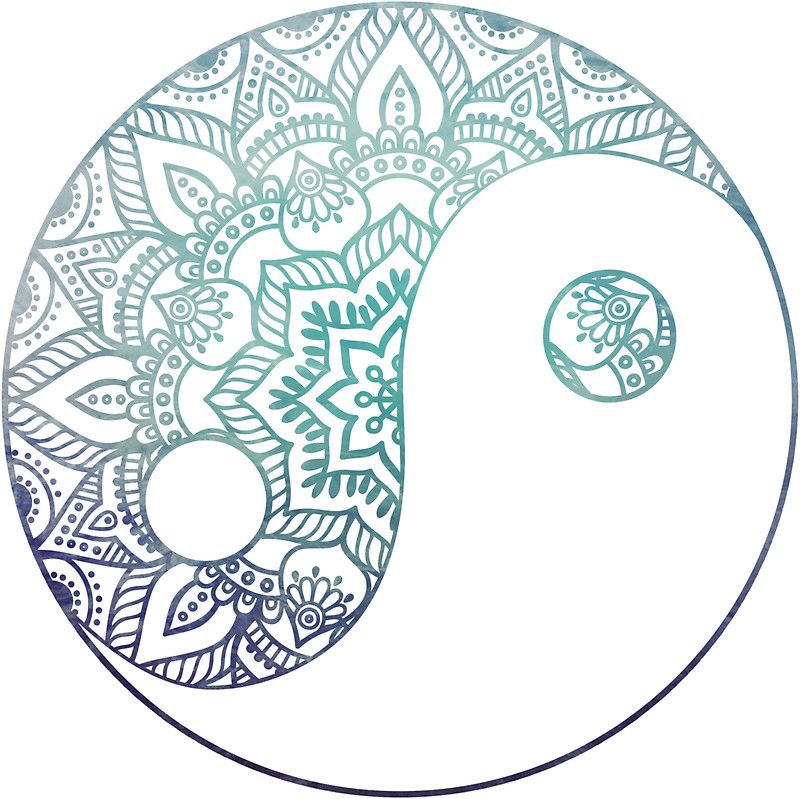
The mandala is not only a geometric figure, but also a tool for meditation, very useful for concentration, activation of positive energy, attention, deep meditation, energising places, raising the level of consciousness, expanding the capacity of the mind and memory, among others.
Mandalas can be painted on paper or cloth and can be used as an object of worship and mystical contemplation, which is achieved by starting from the outer circles or squares and merging with the centre. In the art of Yin Yang, they help you to balance your chakras. There are many benefits to making mandalas, as you will see below:
- Do active meditation work
- Get in touch with your essence and creativity
- You will express yourself better to the outside world
- Helps you expand your consciousness
- Develop patience
- Awaken the senses.
- You may begin to see what is around you in a new light.
The Importance of Yin Yang in LoveThe philosophy of Yin and Yang can help us to understand many things and of course it can help us in love, because if we have harmony in our feminine and masculine energy we will find the right person or we will harmonise better with the energy of our partner (see article: Gods of Taoism).

Yin and Yang is an image of the balance and duality of everything around us and when we focus on love it fulfils a primal function that we will see later. When we look at this symbol we see that it is represented by two leaves, one black (yin-feminine) and one white (yang-masculine) coming together to form a circle, symbolising sacred union.
The meaning of this is very extensive, but in love it has the function of regulating all the inequalities and imperfections that can exist in a relationship, and in turn shows that the couple with a perfect balance is one that has the qualities that the other does not have, so if you are a strong person, you should look for someone weak and in this way you can achieve a perfect relationship.
An important detail for all those who feel lonely and have no one to love them is that we all have our opposite and in everyone there is a trace of one in the other. And, of course, this will be completely united when they decide to intertwine their bond and form a circle within it. Another fact that proves that marriage is not a divine coincidence, but a causality.
Yang lovers take the initiative in life and in the bedroom. Their sexual energy increases immediately and is generated in the genitals. This energy needs to be slowly transferred to the rest of the body. In love, Yang lovers can be eager to enter and possess a powerful and passionate soul.
This positive polarity represents: giving, movement, masculine energy, fire, sun, daylight, heat, dryness, speed, assertiveness, angular forms, intellect and the sky. Yin lovers, on the other hand, are receptive, inactive, sentimental, sensual and acquisitive. Their sexual energy comes from the outer parts of the body and needs to be directed to the genitals. Yin lovers like to take their time and enjoy foreplay as love builds.
The Philosophy
The principle of yin and yang is a fundamental concept within Chinese philosophy and culture, generally dating back to the third century BC or even earlier. This principle states that all things exist as inseparable and contradictory opposites, such as female-male, dark-light and old-young.
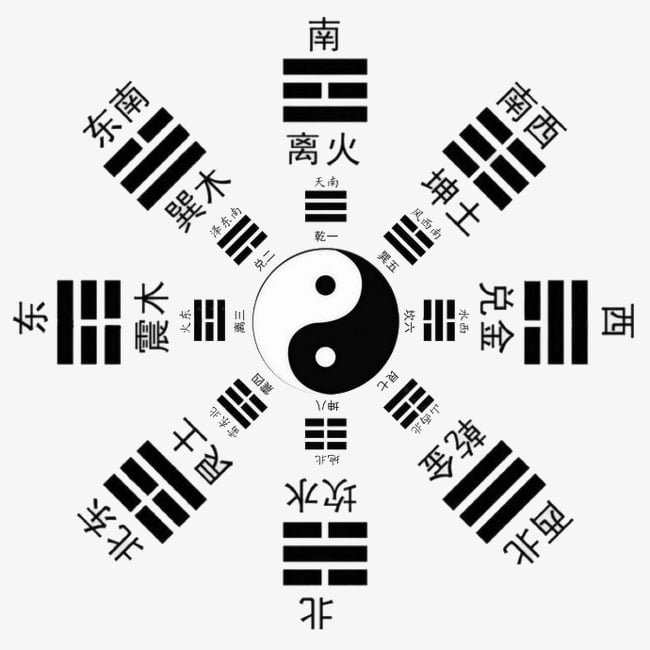
The two opposites attract and complement each other, as their symbol shows, with each side having an element of the other in its centre (represented by the small dots). Neither pole is superior to the other, and an increase in one leads to a corresponding decrease in the other, so a correct balance between the two poles must be achieved in order to achieve harmony.
In Chinese mythology, Yin and Yang were born out of chaos when the universe was first created and were said to exist in harmony at the centre of the earth. Their achievement of balance in the cosmic egg gave way to the birth of Pangu (or P’anku), the first human.
In summary, the early Chinese gods Fuxi, Nuwa and Shennong were born of Yin and Yang. In Chinese religion, Taoists favour Yin while Confucianists favour Yang, keeping them at the centre of their respective philosophies. Taoists emphasise seclusion, while Confucianists believe in the importance of engagement in life.
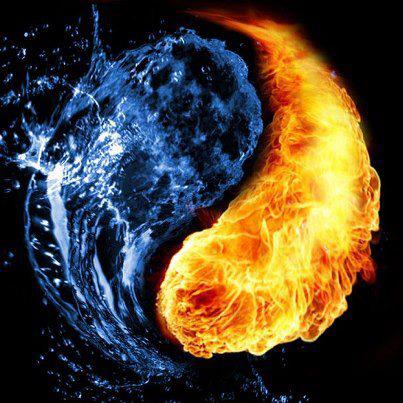
Native Taoism was a philosophy based on metaphysics, dealing both with the nature of what exists (animals, people, seas, rivers, stars, etc.) and with what should be done, i.e. morality. As in the writings attributed to Lao Tse, what is right to do comes from the natural mandate of things, so that nature and morality are one and the same. To do wrong, therefore, is to “deviate” from the path by which change occurs in nature when nature remains in harmony.
Red
The yang colours are those of the elements fire and wood, and some earth. These colours increase energy by bringing clarity, joy and enthusiasm. In a balanced way they help to mobilise and transform circumstances and calm melancholic states. Some Yang colours are

- Red:
Considered the most Yang of all, it symbolises fire and therefore transformation. It evokes passionate emotions, whether for love or war. Some details of red in our space make it dynamic. In Feng Shui it is considered the colour of luck.
- Orange:
It is a colour of great Yang, with a lot of luminosity, and in Feng Shui it is used to strengthen concentration, because it helps to wake up without much excitement. It is also a colour that encourages organisation.
- Yellow:
In Feng Shui this colour is always associated with good luck, as it symbolises the sun, and with it warmth, joy and friendship. However, in Feng Shui it is not necessary to have a large amount of this colour, as it can make us obsessive.
- Brown and beige:
Its yang is softer and therefore more neutral. It symbolises simplicity and consistency. It conveys warmth and stimulates the appetite.
- Other Yang colours:
In this group we can include purples and violets, or medium and light greens, as well as some bright and light blues.
Blue
In Feng Shui, Yin colours create serenity and help to stabilise different situations, environments, places and things, and when used in a balanced way, they create relaxation and help to heal through rest. They are essentially colours of metal and water energy. Some Yang colours are
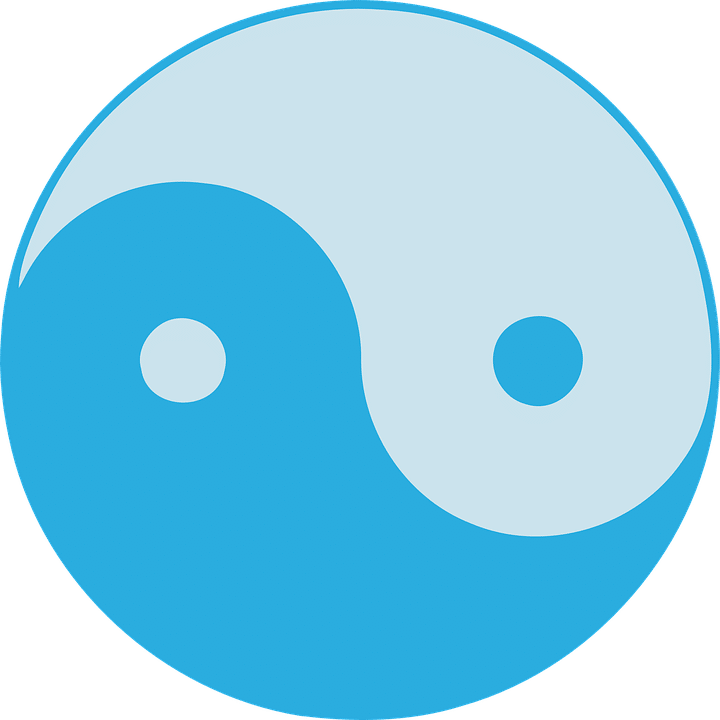
- Black:It is the most intense colour, the colour of the universe, disturbing to some, but always with personality. This is why Feng Shui associates it with power and dignity. It also symbolises money and work.
- Dark blue:It is a calming colour that evokes feelings of peace and trust and therefore helps to heal. It is the colour of the sky and the sea, which is why Feng Shui associates it with adventure, research and an observant spirit. Deep blue is a colour of intelligence and knowledge.
- White:It is the brightest yin colour and is associated with confidence, balance, sensitivity and purity. It is a yin colour that combines well with other yang colours and produces yin energy without being exaggerated.
- Grey:
It is considered a neutral yin, a metal associated with stability, self-control and independence. It invites introspection and working outside of established patterns.
- Other Yin Colours:
In this group we can include cool purples, off-white pastels (some soft pinks, for example), blues and darker greens.
Religion
Taoism is a type of philosophy of life based mainly on the Tao Te Ching, which tradition attributes to the Chinese philosopher Lao-Tse. Its teachings are based on the concept of an absolute yet mutable unity called the Tao, which is the supreme reality and the cosmological and ontological principle of all things (see article: Rites of Taoism).
Taoism establishes the existence of three forces: a passive force, an active force and a third, reconciling force. The first two resist and integrate in parallel, which means that they are absolutely interdependent and function as one. They are Yin (passive-subtle, feminine, wet force) and Yang (active-concrete, masculine, dry force). The third force is the Tao, or higher force, which contains them.
Taoism has influenced many fields of knowledge, including medicine, some schools of meditation, and even the martial arts. There is a similarity in some concepts of Taoism and Tantra, particularly the vision of the world as an ecosystem and the consideration of a path to enlightenment within the sexual act.
When Buddhism arrived in China, the relationship between Buddhism and Taoism gave rise to the Buddhist religious and philosophical school of Chan (a synonym of the Sanskrit word dhyana, meaning meditation), which, when it spread to Japan, gave rise to Zen.
Yoga
Yin Yang Yoga is a fusion of traditional yoga and meditation with a philosophical direction based on Chinese energetic and physical skills such as Chi Kung and modern and ancient Chinese philosophies. It is a flexible and non-dogmatic way of teaching and passing on knowledge, with different approaches to this activity. Simon Low and Sarah Powers are two of its main promoters, each maintaining a very personal approach within the same practice.

Yin Yang Yoga is a way of doing yoga practice that holistically and comprehensively embraces the Yin and Yang characteristics of our nature.
The Taoist ideas of Yin and Yang express the dual qualities or energies present in everything. Yin is the darker, inner, passive, cold, downward and hidden appearance of things, while Yang is the brighter, outer, dynamic, hot, upward and revealing appearance. Yin and Yang exist in relation to each other and cannot exist separately. For example, you cannot have day (yang) without night (yin). The two make the whole.
Yin and Yang Yoga is a practice that integrates, transforms and balances, it is not dogmatic.
- It integrates because it brings together the Yin and Yang forces, the feminine and masculine, within each individual.
- It transforms because the imitation of the laws of nature facilitates the abandonment of old habits that are not conducive to progress and cause stagnation.
- It balances because it facilitates the return to the centre of what has been overwhelmed.
- It is non-dogmatic because flexibility of ideas, visions and practices is seen as wisdom.
Energy
When we talk about energy in Taoist philosophy, which is based on the dualism of everything that exists in the universe, we talk about yin and yang, each of which has an opposing and completely opposite energy. Traditional Chinese medicine is based on these two opposing and complementary forces, since everything is integrated by these energies (day is yang, night is yin; heat is yang, cold is yin; dryness is yang, moisture is yin; what is concentrated and dense is yang, while what is separated and dispersed is yin).

Through the interaction of the two, balance and harmony can be achieved. We know that everything that exists is in constant change, Yin would not exist without Yang and Yang would not exist without Yin and without these two energies there would be no life. To give an example, we can say that the sunset is Yang changing into Yin, or the sunrise is Yin changing into Yang.
If there is an imbalance of Yin energy in people, they will have difficulty concentrating, they will have a lack of memory, the mind will always be thinking about the future. This type of person lacks grounding, centre, they are very creative, they have a lot of imagination but they find it difficult to put it into practice.
If the Yang energy is excessive in a person, he/she will be rigid, inflexible and irritable. The mind will always be in the past. This type of person is moved by sensual things, they are very practical, but on many occasions they are blocked and too tense (see article: Sexuality in Taoism).
Food
The Yin Yang criterion is taken from Eastern macrobiotic culture to identify foods that have qualities that generate expansion (Yin) and those that generate contraction (Yang). In this way, a healthy diet should have a balance of both types of food. In this way, we can identify some characteristics that make certain foods more yin or more yang. (See article: Confucianism).
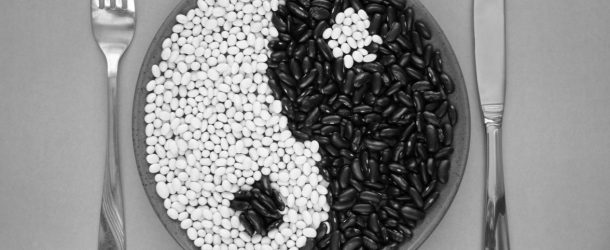
Yin foods are those of plant origin, cold, moist, fast-growing, with a very distinctive colour, strong smell and taste. The more of these characteristics a product has, the more yin it is, but it is not positive that it is very yin, it is better that it is balanced. The healthiest foods include fruit, vegetables, seeds and nuts. The most yin are milk, coffee and sugar.
In terms of their benefits, yin foods bring us freshness and relaxation. The main characteristics of yin foods include the following

- have a higher potassium content
- Prefer warm or hot climates
- Grow faster
- Grow bigger
- Grow taller
- Are softer
- Watery
- Grow upwards
- Grow horizontally underground
- Have larger leavesYang foods are drier, animal foods, whole grains, root vegetables, legumes, seafood, fresh cheese, salt. They grow slowly, underground, thrive in cold climates. Foods with excess yang are meat, poultry, hard and salty cheeses and eggs (see article: Healing Chakra).
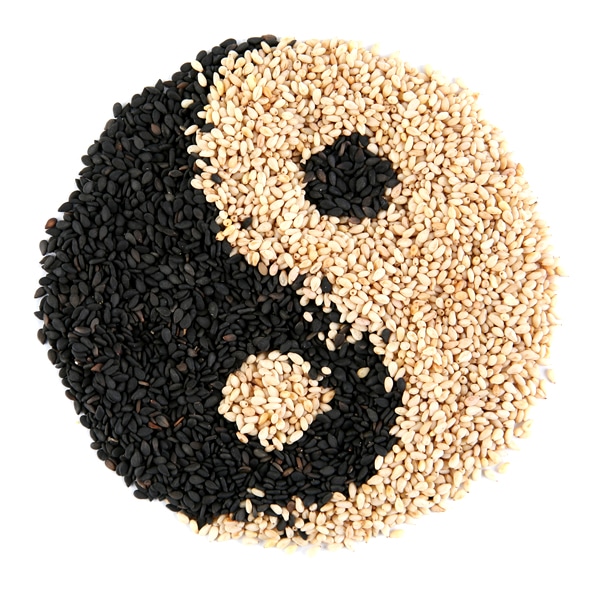
They are good for times when you need extra energy, although it is important not to overdo it. A healthy diet should be as balanced as possible. The main characteristics of Yang foods include the following
- They have a higher sodium content
- Prefer cool or cold climates
- They grow more slowly
- They are smaller
- They are shorter
- They are harder
- They are drier
- Grow horizontally above ground
- Grow vertically below ground
- They have smaller leaves
Amulet Yin Yang: Meaning
The Chinese Yin Yang Pakua symbol is a powerful amulet for harmony and emotional balance. This symbol is very old and because of its mathematical position it is said to have very healthy vibrations for the mind when used as a meditation tool. But above all, this symbol is known to be a great talisman of luck to achieve abundance and also a great protector against anything negative.
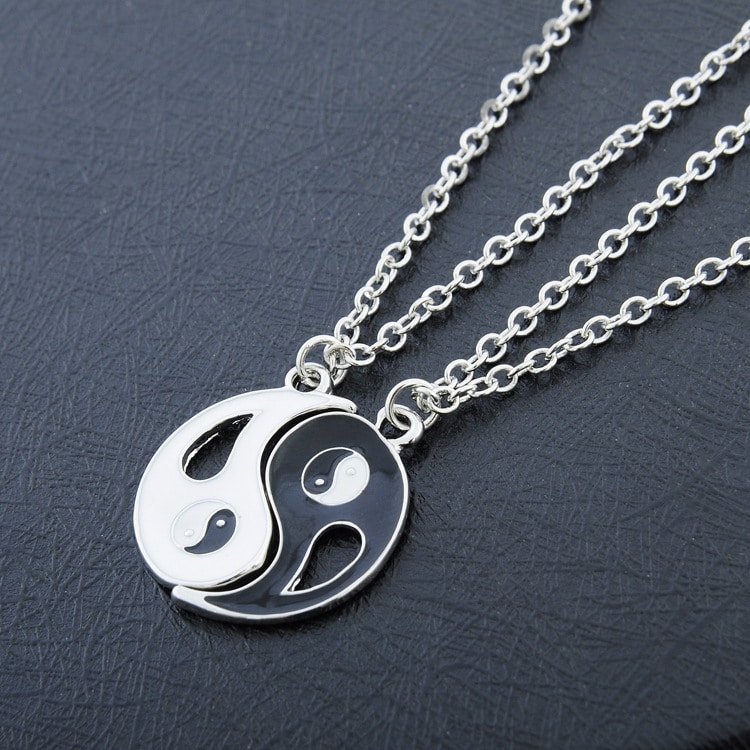
Balance
Yin and Yang, essential to the human condition, can sometimes be out of balance, resulting in a range of physical, emotional and spiritual disturbances, such as relationship conflicts, an inability to manage emotions and even difficulties in achieving goals. To find a way to balance the energies of yin and yang, we need to unblock our highest inner major, and here are three ways to do this:
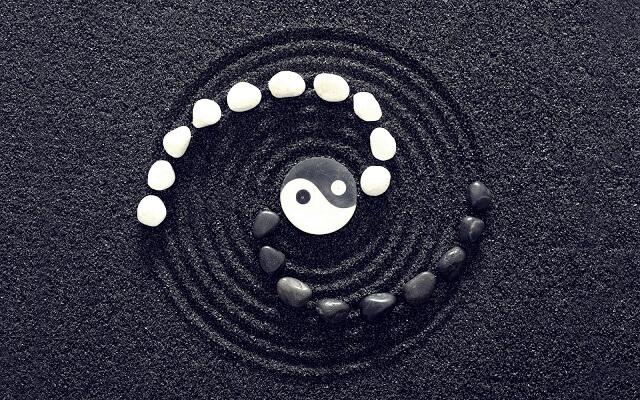
- Through the body. In order to balance the two energies of Yin and Yang through the body, it is important to be aware of each of the sensations that emanate from it.
To achieve this, it is advisable to train the simultaneous use of both hemispheres, starting with the simultaneous use of both hands. This is a way of being in constant communication with ourselves, without having to analyse and judge the quickest response of our body.
Even if this means taking time to rest or forcing the body to move. Another way to balance the body is to adopt the premises of Traditional Chinese Medicine and modify your diet. If you tend to be more Yin, it is better to eat more Yang foods such as eggs, tubers and grains.
- Through the mind. Daily meditation is the best way to balance Yin and Yang and improve the expression of our self-image and identity. The activity begins with the body, sitting cross-legged with the palms of the hands resting on the knees.
During this practice it is recommended to visualise the two hemispheres working in balance or to use four-point breathing to balance the two hemispheres of the body.
It is probably possible to get emotions or thoughts that cause us distress, so it is advisable to become an observer of them without allowing them to affect us in the present. This means that as we find ourselves out of our fears, we have the ability to speak to our true self-care needs; and one way to do this is to align our chakras.
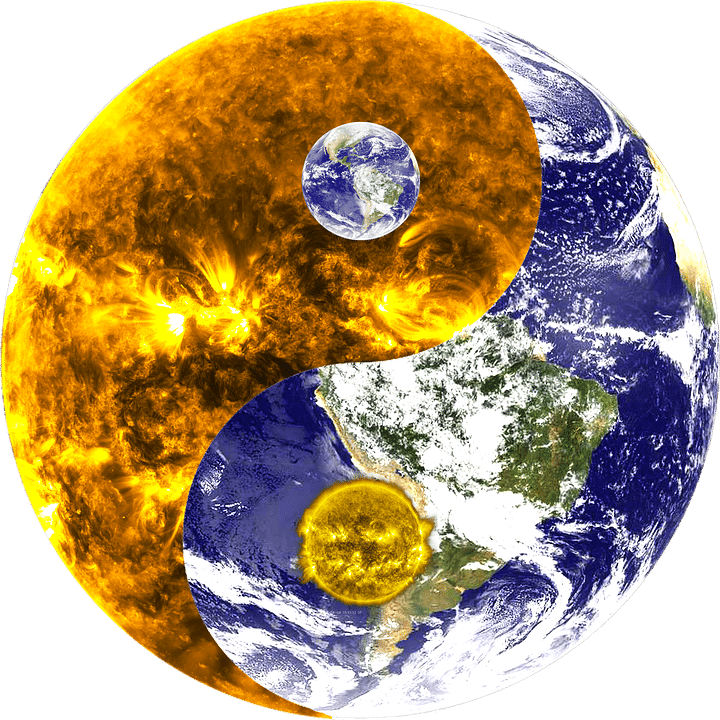
- Through the mind. Integration and non-duality are activities that require an act of (non-religious) faith that facilitates a change in the way we perceive reality. It requires bringing ‘non-duality’ into consciousness, which means not only understanding that our perceptions of polarity are boundaries that can create distress, but also having the capacity to see beyond our emotional boundaries to empathically see those of others.
This kind of work involves a process of assimilating death, an end that has no end, but a continuity that dissolves light and dark, life and death, masculine and feminine. In this way Yin and Yang can move through us in balance, continuity and freedom from duality.
5 elements
Traditional Chinese philosophy manifests the theory of the Five Elements. According to this theory, all natural phenomena and their interrelationships are governed by these elements. The theory of the five elements was formulated by the Chinese sage Zou Yan around 300 BC and is based on nature itself. The five elements are therefore: wood, fire, earth, metal and water.
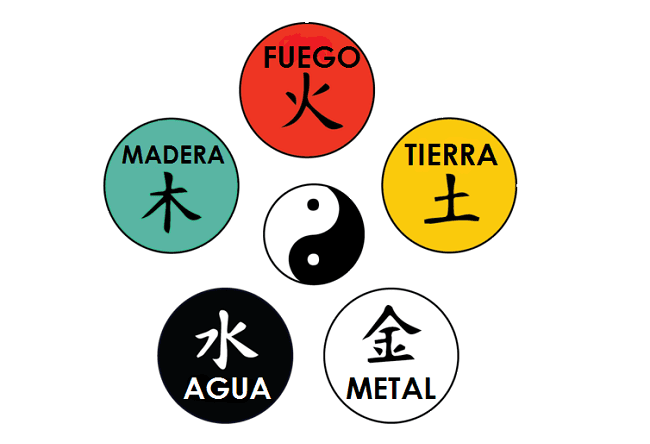
It is also called the theory of the 5 phases because, according to Chinese tradition, these elements are related to each other in a circular way, in a definite order, but without beginning or end. In this way, each element gives way to the next.
On this basis, each element has an organ that represents Yin and a viscera that represents Yang. Similarly, each element is associated with a life circumstance and certain emotions. This is what Traditional Chinese Medicine is based on for healing: balancing the elements and emotions. By learning about each element and how it relates to the organs of the body, one can learn to restore one’s own balance (see article: Voodoo Binding).
Theory
The classic symbol of Yin and Yang is recognised practically all over the world. Although this diagram has its very ancient origins in Chinese philosophy, it can be said that this idea, this concept, is present in many different cultures. In the Hindu, Egyptian or Hebrew tradition, this expression of the dual, of this complementarity, where day and night, male and female, earth and sky, form a sense of harmony, where opposites complement each other and flow together to give dynamism and meaning to life.

On the other hand, the theory of Yin and Yang suggests that each of us has already arrived in this world ‘complete’. Within us are combined abilities, qualities and characteristics that in themselves form a diverse, infinitely rich and sometimes even paradoxical whole (see article: Sacred Books of Hinduism).
Nevertheless, we see ourselves with a number of very definite, defining and absolute characteristics. For example, we can see ourselves as noble, reasonable and humanitarian, forgetting that violence can also appear at the moment we least expect it.
We can think of ourselves as very active individuals, but sometimes laziness catches up with us. We can feel happy and desperate in the same day. We are the beings capable of loving and hating at the same time (and the same person) (see article: Blocked Chakras).
Moreover, one can live a life governed by logic and the most objective reasoning, and at a certain moment wake up and change. To realise that this is not the way and to turn one’s life towards a more intuitive and emotional side.
Is it satanic?
The Yin Yang symbol is a Taoist symbol of two great opposing principles or forces on which everything depends (see article: Voodoo).
Although it is seen as a symbol of harmony and balance, it is considered satanic by other western cultures and religions and is therefore frowned upon. The different ways people or groups think and see things is what makes us different from others. While some may see it as “evil”, others, who may not see it in the same way, see it as part of their culture.
Yin Yang Kung Fu
Kung Fu is a martial art of Chinese origin, a complete fighting discipline based on Eastern philosophical principles of Buddhism and Taoism (see article: Beliefs of Hinduism).
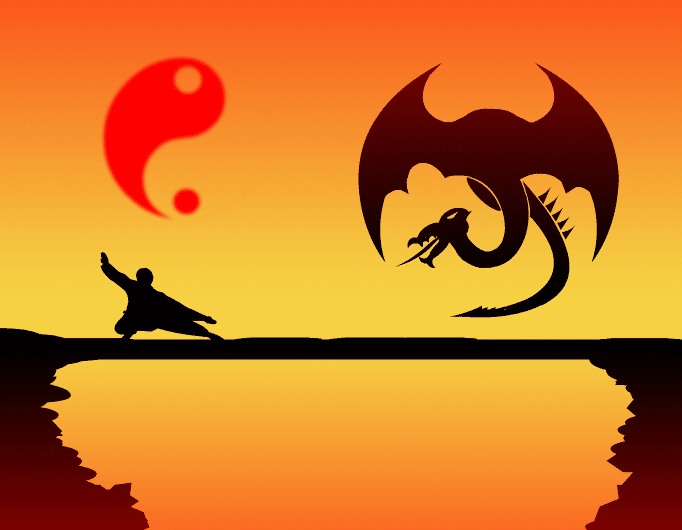
Taoist philosophy and thought have had a great influence on the ideas and foundations of martial arts, and probably the Yin-Yang duality and antagonism is the most important idea within martial practice, thanks to which, among many other things, the criteria of non-violence have been extended. When the student of a martial art begins his practice, he tries to integrate himself into the Yin-Yang duality, which requires the mastery of organised energy.
According to the ancient Taoist philosopher Tsai-Chen, Yang is the exhaled air and Yin is the inhaled air. The former emits, sows and fertilises; the latter receives, transforms and generates. That is why Chinese martial arts, especially the internal styles, when translating these principles into movement, what they do is: when they are going to strike, they exhale the air so that the Yang principle (strength) moves towards the opponent; when they are going to receive a blow, they keep the air inside so that the Yang principle (hardness) is maintained and the blow causes less damage.
On the other hand, when the opponent’s force is displaced by a wraparound block or a block with dodge, air is inhaled so that the yin principle (relaxation) acts as a catalyst, allowing the energy of the opponent’s movement to develop into our own defensive action.
For couples
The secret of a good relationship is observed when the Yin-Yang energy is balanced and aligned with that of your partner. In this way we can see that when both parties in a relationship are very “Yin” or negative in polarity, there is a lack of Yang or positive polarity for balance to exist. An attractive personality is characterised by having a balanced Yin and Yang, as the result is pleasant, enjoyable and it is a pleasure to share with a person with these characteristics (see article: Chakras and Diseases).
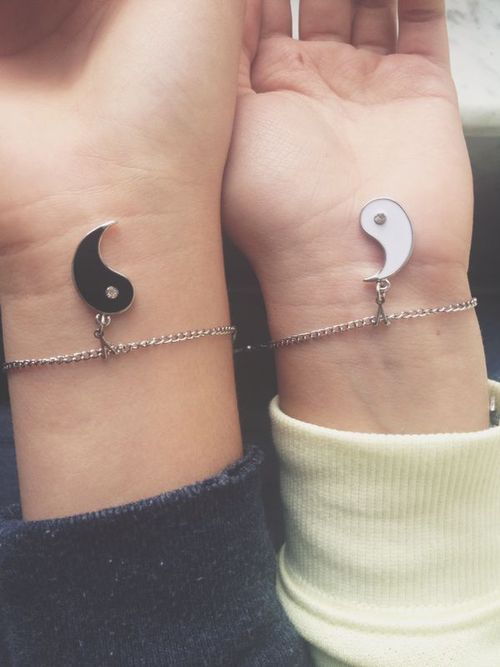
The yin-yang pair is indissoluble and variable; each of the terms becomes the opposite and complementary. This is manifested in the traditional image. When the Yang (white-active) is at its peak, the wider part of the Yin (black-passive) gradually replaces the thinner part, and so on. Yin and Yang have no “moral” weight. Neither is superior or inferior to the other. Their antagonism is as necessary as that of the left and right hands in clapping.
But beware of the woman’s natural yin energy, which makes her more thoughtful and evolved than the man, and the gender rivalry arises when the man uses physical force and the woman manipulates. The woman begins to imitate the man, pretending to surpass his strength and forgetting that she is a woman, both competing for their triumphs without seeing that these triumphs belong to both of them as a couple, the man wants to be better also imitating the woman, wanting to look like her and he makes himself up, depilates what is currently called sexual metre, deviating and forgetting his true essence of being a man.
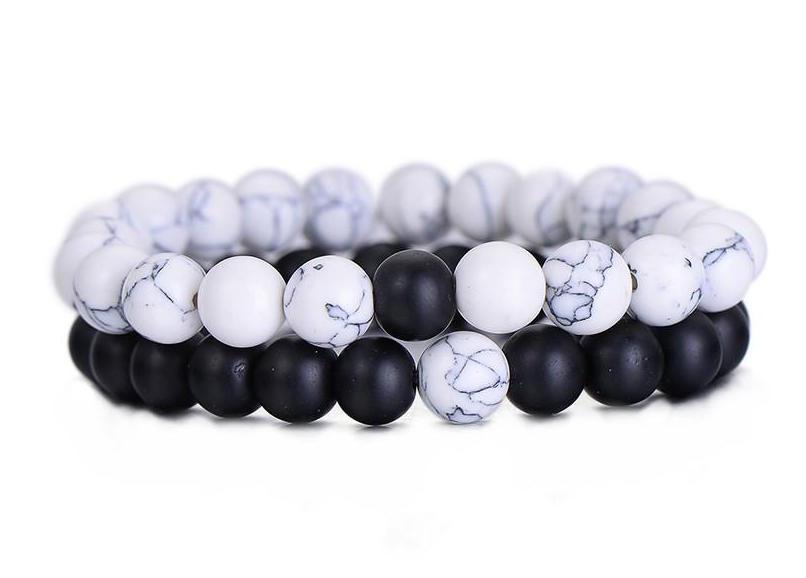
What a woman should not forget is that she is a woman, and what she needs to learn from a man is his strength, but she needs to turn it into power to weigh and develop in doing things, and what a man needs to learn from a woman is to use thinking to act in a more thoughtful way. and both develop in such a way that they develop and raise better (strong and thinking) children.
The yin-yang is an active symbol. It shows the constant interaction of two energies and their balance: as such it is a prototype of harmony that establishes equality, for without Yin there can be no Yang and vice versa, and without the interaction of both there is no life. There is no opposition between Yin and Yang. They are complementary.
Examine yourself and your partner. Find balance in everything you do, and above all, do not make the mistake of falling into extremes, which are the source of fanaticism and intolerance; you must learn to be a serene and active woman. It is a game of Yin and Yang, without turning away and without exaggerating one force and without diminishing the other, serenely active and actively calm. Be very careful, because behind an extremist there is almost always an abuser.
In the human body
Traditional Chinese medicine takes a holistic view of the body. Rather than a strictly physical prototype, the body is seen as a composition of physical and non-physical substances (see article: Taoism).
There are three main functional entities in TCM that explain how the human body works. These are:

- The five basic substances: Qi, Xue (Blood), Jinye (Body Fluids), Jing (Essence) and Shen (Spirit).
- Zang-fu: A WuXing cycle of 5 zang organs, 6 fu organs and their functions.
- Jing-luo: The channels or meridians through which qi flows.
Each of the functional entities is associated with a cardinal function. The five cardinal functions are
- Drive
Locomotion of all physical processes in the body. Especially for blood and chi.
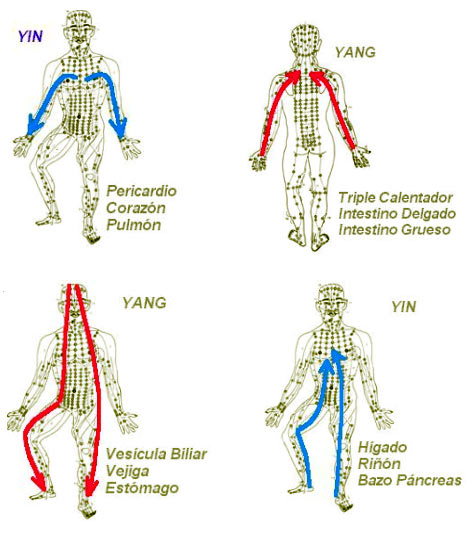
- Warming
Temperature regulation, especially of the extremities.
- Defence
Protection against foreign pathogens.
- Containment
Preventing excessive loss of various body fluids.
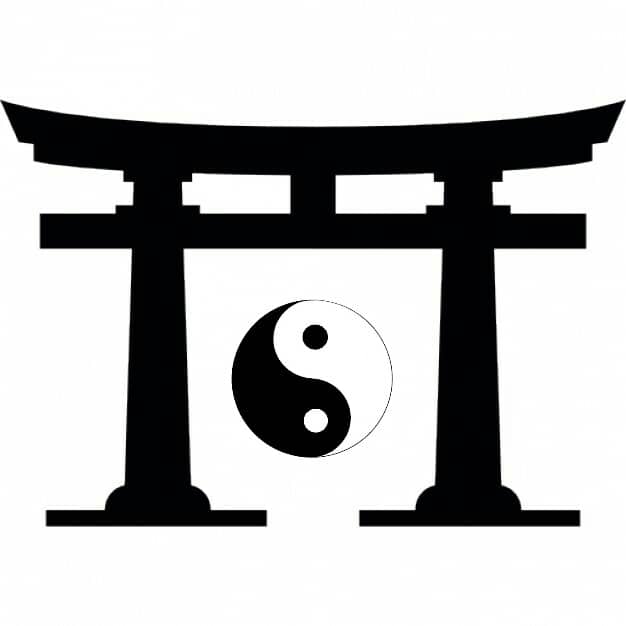
- Transformation
The transformation of food, fluids and respiration into qi, blood and other jinye.
As such, the functional entities should be considered in terms of their practical roles, rather than strictly in terms of their biochemical and anatomical functions. All functional entities are interrelated.
Zang-fu: For example, organs have a WuXing cycle called Zang-fu that effectively demonstrates this relationship. Zang refers to the organs that are inherently yin. These are the pericardium, heart, liver, spleen, lungs and kidneys.
Fu refers to the organs that are Yang. These are the triple warmer, the small intestine, the large intestine, the gall bladder, the bladder and the stomach. Each zang has a fu and each zang-fu pair corresponds to one of the five phases. The table below shows this relationship.
Jing-luo: Each of the zung-fu pairs has 12 jing-luo or channels through which qi, blood and body fluids flow; these are known as the 12 major meridians. They run from the zung-fu organs to the limbs and joints. There are 8 extraordinary meridians that connect to the 12 main meridians. These 20 meridians form a network of nearly 400 points. The numerous meridians and acupoints are visually represented in the famous acupuncture models that many of us know.
Yin Yang I Ching
The I Ching is a collection of 64 diagrams showing the interaction of Yin and Yang in a sequence of 6 rooms. Like a 6 rung ladder: on each rung there is a yin or a yang. The first rung is the beginning of the situation. It moves from bottom to top.

This is the energy that comes out every year on the days from 23 to 27 December. All the steps contain a Yin (divided line), except the first one (the bottom one) which has a Yang (continued line). This complete Yang line enters the hexagram full of Yin lines and begins to mobilise it. The annual cycle begins.
Yin is dark, flexible, receptive, soft; Yang is bright, firm, active, strong. The north side of a hill is yin and the south side is yang. The sun is yang and the moon is yin, although in the middle of the night the light of the moon and stars is yang and the darkness is yin. Understanding the concept alone does not help. Observing and living the yin-yang polarities every day is the most effective way. Every circumstance is a crossing of polarities: phenomena that are in the yang phase and phenomena that are in the yin phase. They are constantly changing.
Yin and Yang Taoism
Taoism relies primarily on human nature for its meditations. Although it is a religion distinct from the dogmatic, legendary ones, it also has a wide variety of mystical beliefs. For Taoists, vitality and fulfilment are achieved through effort, but also through inaction (wu-wei). It is not literally a total absence of activity, but rather a natural low level of activity according to one’s own needs. For Taoism, when one is still, one hears the inner call of the Tao.
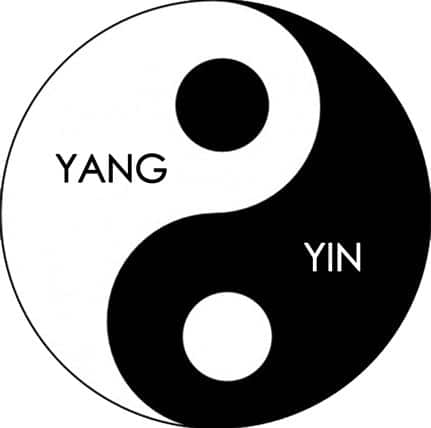
What is remarkable about Taoism is that it is “not fully defined”, i.e. it does not have a set of dogmas to conform to, as is the case with Christianity or Islam, but has a constructive process to enable people to achieve happiness. There is no help from “beyond” for individuals, so Taoists have their work cut out for them if they want to achieve harmony.
It stands for equality and against any system of oppression and repression by any religious or political force anywhere in the world. Because it promotes oneness with the universe and brotherhood among human beings, it is opposed to nationalism or social or political conventions, for which it has in some cases been suppressed or condemned, especially in China.
Taoism does not have an official register of its adherents, as it is primarily concerned not only with the transmission of its teachings, but also with the individual’s ability to attain the Tao. According to official figures from various countries, there are around 50 million Taoists worldwide. Many of them are also counted as Buddhists or Confucianists, as the two religions share many similarities. China, South Korea and Japan are the countries where Taoism is most widely practised. On the American and European continents, Taoism arrived thanks to its influence on the martial art of Kung Fu.
Yin Yang Yo
Yin Yang Yo! is an American-Canadian animated series created by Bob Boyle and produced by JetixAnimationConcepts and Walt Disney TelevisionAnimation in the cities of Burbank in the United States and Toronto in Canada.

The series premiered in the United States on 4 September 2006 on Jetix with a first season of 26 episodes. In Latin America, the series had its pre-release on 18 December 2006 on the Jetix channel and Unodostres, and its official premiere as part of its programming was on 18 December 2006, also on Unodostres.
The second season of the series premiered in the United States on 31 December 2007.
The plot of the series is based on the story of two teenage twin rabbits named Yin and Yang, who live in the dojo of the elderly and eccentric Master Yo, the last living panda and the only Woo-Foo Knight left in the world, who tries to pass on his teachings to the young apprentices.
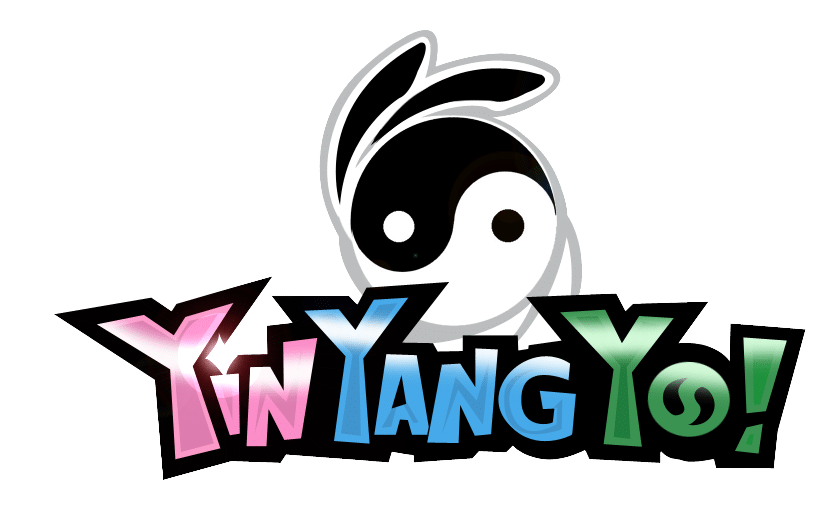
Yin and Yang’s mission is to learn to develop the powers that the Woo-foo Knights have used for centuries to protect the planet from evil forces, but it is no easy task, not only because there are many powerful enemies who insist on attacking them and the city, but also because as teenagers they have conflicts and ideas about their own age that only get them into more trouble.


